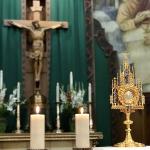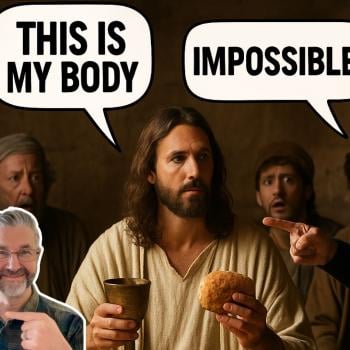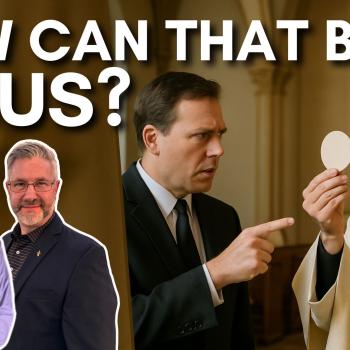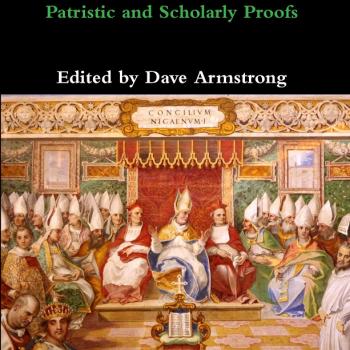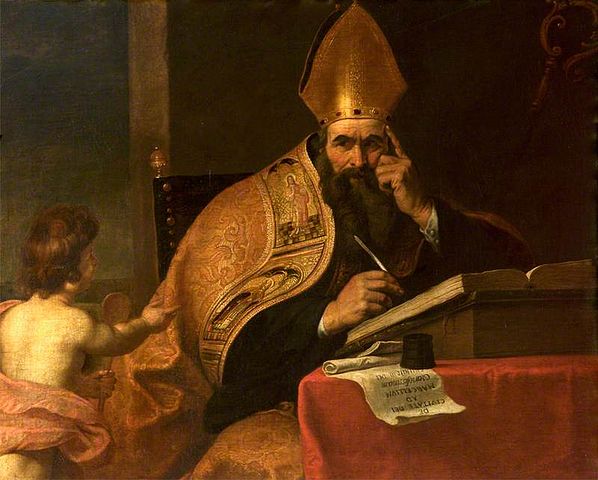
* * * * *
Dear friends,
I have been challenged both as to the history of eucharistic doctrine prior to 1517. Therefore, I will cite no less than nine reputable Protestant scholarly sources to back up my contention that there was virtual unanimity of belief in the Real Presence all through that period (note again, I say nothing of transubstantiation, which is the more narrow, particular belief; this has been my argument all along):
1) Otto W. Heick, A History of Christian Thought, vol. 1, Philadelphia: Fortress Press, 1965, 221-222:
- The Post-Apostolic Fathers and . . . almost all the Fathers of the ancient Church . . . impress one with their natural and unconcerned realism. To them the Eucharist was in some sense the body and blood of Christ.
2) Williston Walker, A History of the Christian Church, 3rd edition, revised by Robert T. Handy, New York: Scribners, 1970, 90-91:
- By the middle of the 2nd century, the conception of a real presence of Christ in the Supper was wide-spread . . . The essentials of the ‘Catholic’ view were already at hand by 253.
3) Philip Schaff, History of the Christian Church, vol. 3, A.D. 311-600, revised 5th edition, Grand Rapids, Michigan: Eerdmans, reprinted in 1974, originally 1910, 492, 500, 507:
The doctrine of the sacrament of the Eucharist was not a subject of theological controversy . . . . till the time of Paschasius Radbert, in the ninth century . . .
In general, this period, . . . was already very strongly inclined toward the doctrine of transubstantiation, and toward the Greek and Roman sacrifice of the mass, which are inseparable in so far as a real sacrifice requires the real presence of the victim……
[Augustine] at the same time holds fast the real presence of Christ in the Supper . . . He was also inclined, with the Oriental fathers, to ascribe a saving virtue to the consecrated elements.
Note: Schaff had just for two pages (pp. 498-500) shown how St. Augustine spoke of symbolism in the Eucharist as well, but he honestly admits that the great Father accepted the Real Presence “at the same time.” This is precisely what I would argue. Catholics have a reasonable explanation for the “symbolic” utterances, which are able to be harmonized with the Real Presence, but Protestants, who maintain that Augustine was a Calvinist or Zwingian in his Eucharistic views must ignore the numerous references to an explicit Real Presence in Augustine, and of course this is objectionable scholarship.
Augustine . . . on the other hand, he calls the celebration of the communion ‘verissimum sacrificium’ of the body of Christ. The church, he says, offers (‘immolat’) to God the sacrifice of thanks in the body of Christ. [City of God, 10,20]
4) J. D. Douglas, editor, The New International Dictionary of the Christian Church, Grand Rapids, Michigan: Zondervan, revised edition, 1978, 245 [a very hostile source!]:
- The Fathers . . . [believed] that the union with Christ given and confirmed in the Supper was as real as that which took place in the incarnation of the Word in human flesh.
5) F. L. Cross and E. A. Livingstone, editors, The Oxford Dictionary of the Christian Church, Oxford Univ. Press, 2nd edition, 1983, 475-476, 1221:
That the Eucharist conveyed to the believer the Body and Blood of Christ was universally accepted from the first . . . Even where the elements were spoken of as ‘symbols’ or ‘antitypes’ there was no intention of denying the reality of the Presence in the gifts . . . In the Patristic period there was remarkably little in the way of controversy on the subject . . . The first controversies on the nature of the Eucharistic Presence date from the earlier Middle Ages. In the 9th century Paschasius Radbertus raised doubts as to the identity of Christ’s Eucharistic Body with His Body in heaven, but won practically no support. Considerably greater stir was provoked in the 11th century by the teaching of Berengar, who opposed the doctrine of the Real Presence. He retracted his opinion, however, before his death in 1088 . . .
It was also widely held from the first that the Eucharist is in some sense a sacrifice, though here again definition was gradual. The suggestion of sacrifice is contained in much of the NT language . . . the words of institution, ‘covenant,’ ‘memorial,’ ‘poured out,’ all have sacrificial associations. In early post-NT times the constant repudiation of carnal sacrifice and emphasis on life and prayer at Christian worship did not hinder the Eucharist from being described as a sacrifice from the first . . .
From early times the Eucharistic offering was called a sacrifice in virtue of its immediate relation to the sacrifice of Christ.
Berengar is the first Christian of any prominence at all that we know of who denied the Real Presence. In the subsequent period we have the Cathari and Albigensian heresies who did the same, and John Wycliffe, whose view was similar to Calvin’s. Hardly notable exceptions to the extraordinary unanimity of all the other great Christians up to 1517!
But — I note in passing — anti-Catholics like Dave Hunt will go to the amazing extent of embracing the Albigensians as Christian brothers, in order to find a Christian “church” which runs counter to the Catholic (or Orthodox) Church in this period. These heretics were Manichaean-type dualists who believed that flesh and material creation were evil and that “Christ was an angel with a phantom body who, consequently, did not suffer or rise again.” They rejected the sacraments, hell, the resurrection of the body, and condemned marriage. (Ibid., p.31) Yet Dave Hunt is ready to accept them as Christian brothers before he will offer the right hand of fellowship and the title of “Christian” to a Catholic like myself! A prime example of irrational anti-Catholicism if ever there was one!
6) Jaroslav Pelikan, The Emergence of the Catholic Tradition (100-600), Chicago: Univ. of Chicago Press, 1971, 146-147, 166-168, 170, 236-237:
By the date of the Didache [anywhere from about 60 to 160, depending on the scholar]. . . the application of the term ‘sacrifice’ to the Eucharist seems to have been quite natural, together with the identification of the Christian Eucharist as the ‘pure offering’ commanded in Malachi 1:11 . . .
The Christian liturgies were already using similar language about the offering of the prayers, the gifts, and the lives of the worshipers, and probably also about the offering of the sacrifice of the Mass, so that the sacrificial interpretation of the death of Christ never lacked a liturgical frame of reference . . .
. . . the doctrine of the real presence of the body and blood of Christ in the Eucharist, which did not become the subject of controversy until the ninth century. The definitive and precise formulation of the crucial doctrinal issues concerning the Eucharist had to await that controversy and others that followed even later. This does not mean at all, however, that the church did not yet have a doctrine of the Eucharist; it does mean that the statements of its doctrine must not be sought in polemical and dogmatic treatises devoted to sacramental theology. It means also that the effort to cross-examine the fathers of the second or third century about where they stood in the controversies of the ninth or sixteenth century is both silly and futile . . .
Yet it does seem ‘express and clear’ that no orthodox father of the second or third century of whom we have record declared the presence of the body and blood of Christ in the Eucharist to be no more than symbolic (although Clement and Origen came close to doing so) or specified a process of substantial change by which the presence was effected (although Ignatius and Justin came close to doing so). Within the limits of those excluded extremes was the doctrine of the real presence . . .
The theologians did not have adequate concepts within which to formulate a doctrine of the real presence that evidently was already believed by the church even though it was not yet taught by explicit instruction or confessed by creeds . . .
Liturgical evidence suggests an understanding of the Eucharist as a sacrifice, whose relation to the sacrifices of the Old testament was one of archetype to type, and whose relation to the sacrifice of Calvary was one of ‘re-presentation,’ just as the bread of the Eucharist ‘re-presented’ the body of Christ . . . the doctrine of the person of Christ had to be clarified before there could be concepts that could bear the weight of eucharistic teaching . . .
Theodore [c.350-428] set forth the doctrine of the real presence, and even a theory of sacramental transformation of the elements, in highly explicit language . . . ‘At first it is laid upon the altar as a mere bread and wine mixed with water, but by the coming of the Holy Spirit it is transformed into body and blood, and thus it is changed into the power of a spiritual and immortal nourishment.’ [Hom. catech. 16,36] these and similar passages in Theodore are an indication that the twin ideas of the transformation of the eucharistic elements and the transformation of the communicant were so widely held and so firmly established in the thought and language of the church that everyone had to acknowledge them.
7) J. N. D. Kelly, Early Christian Doctrines, San Francisco: Harper & Row, 1978, 447, provides this statement on the heels of Augustine’s Ennar 98:
- One could multiply texts like these which show Augustine taking for granted the traditional identification of the elements with the sacred body and blood. There can be no doubt that he [Augustine] shared the realism held by almost all of his contemporaries and predecessors.
8) Carl Volz, Faith and Practice in the Early Church, Minneapolis: Augsburg, 1983, 107:
- Early Christians were convinced that in some way Christ was actually present in the consecrated elements of bread and wine.
9) Maurice Wiles and Mark Santar, Documents in Early Christian Thought, Cambridge: Cambridge, 1975, 173:
Finally, John Chrysostom and Augustine explore the social connotation of participation in the Eucharist: the body of Christ is not only what lies on the altar, it is also the body of the faithful.
***
(originally 12-1-96)
Photo credit: The Four Doctors of the Western Church, Saint Augustine of Hippo (354–430), attributed to Gerard Seghers (1591-1651) [public domain / Wikimedia Commons]
***


